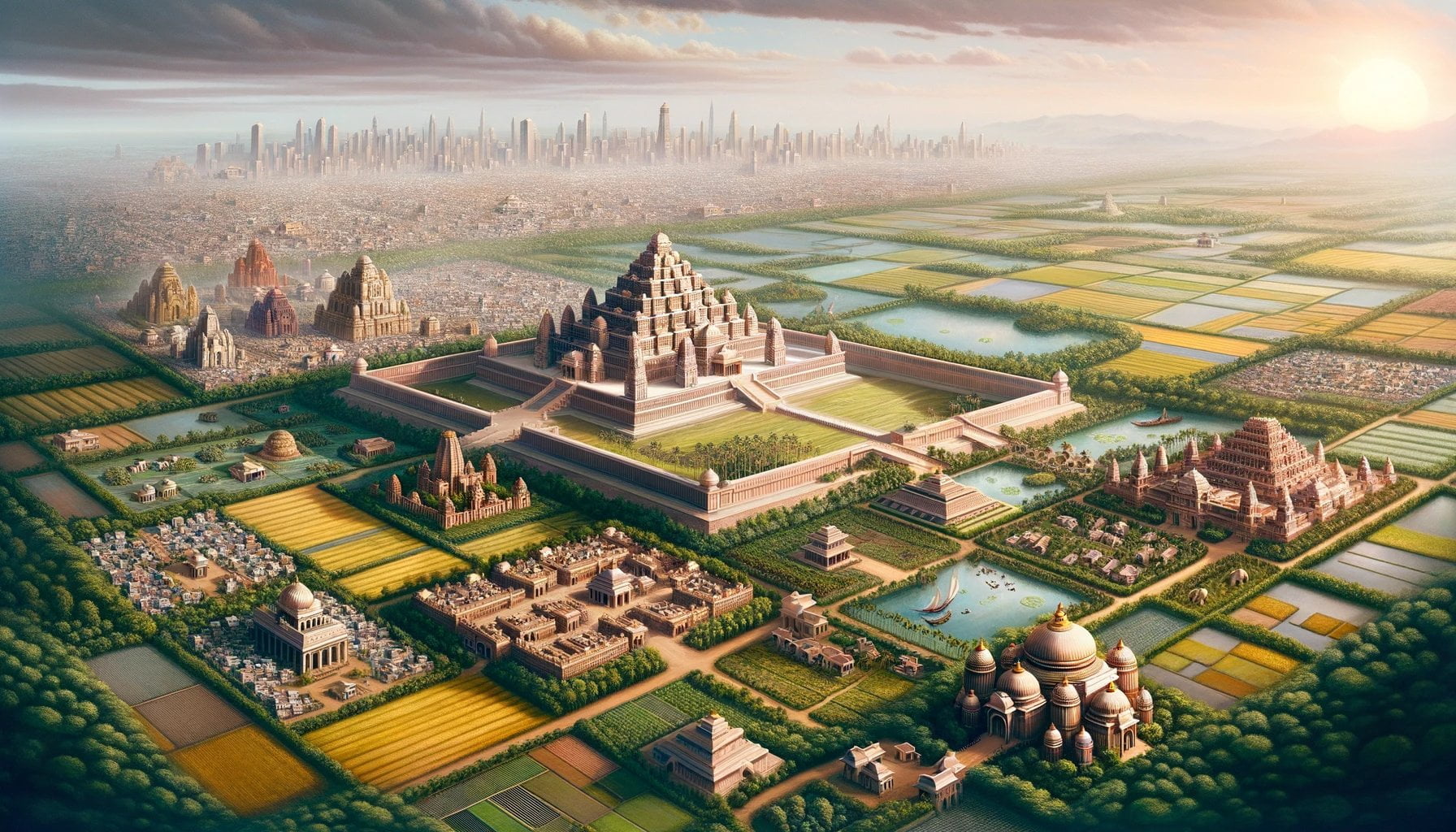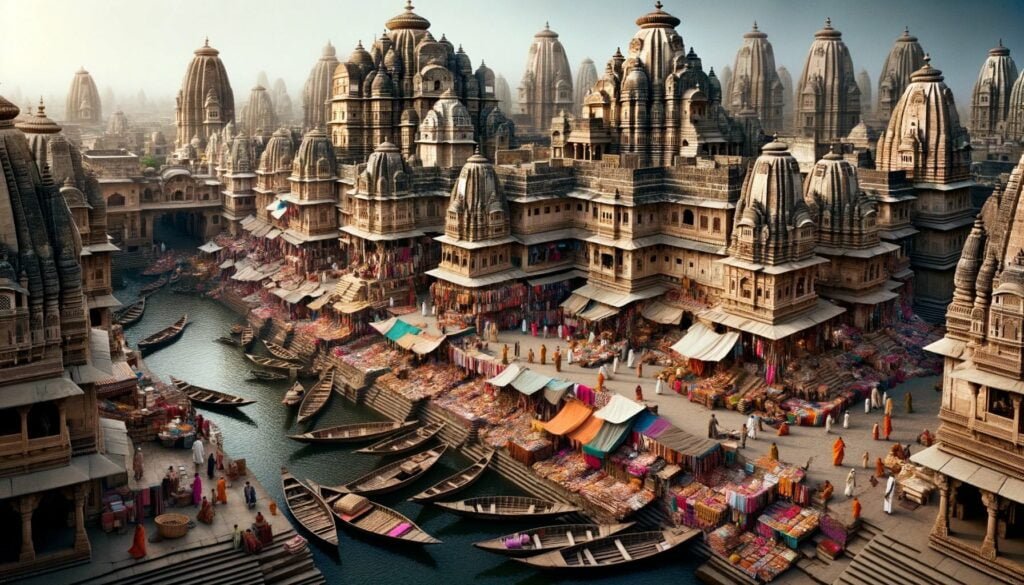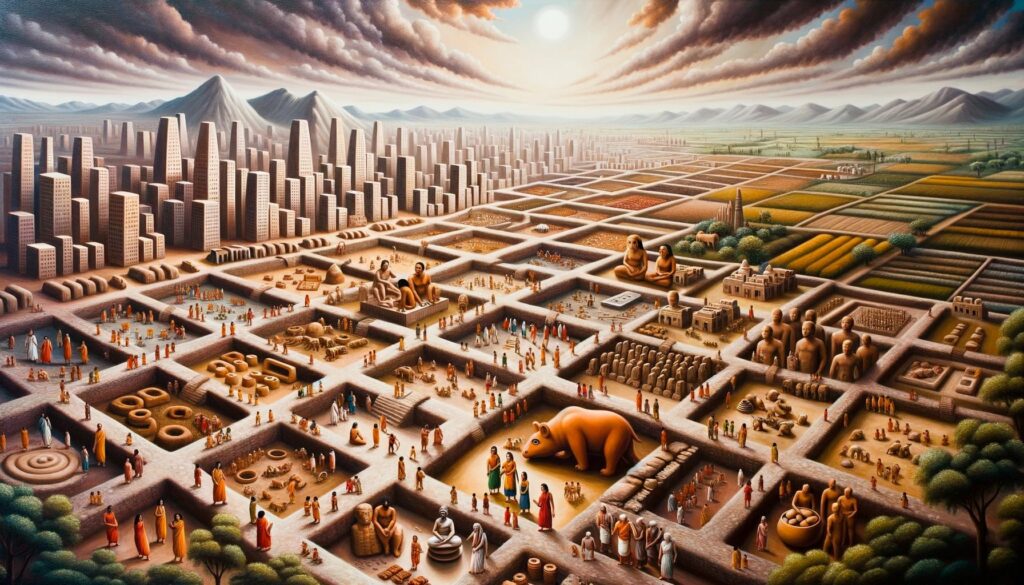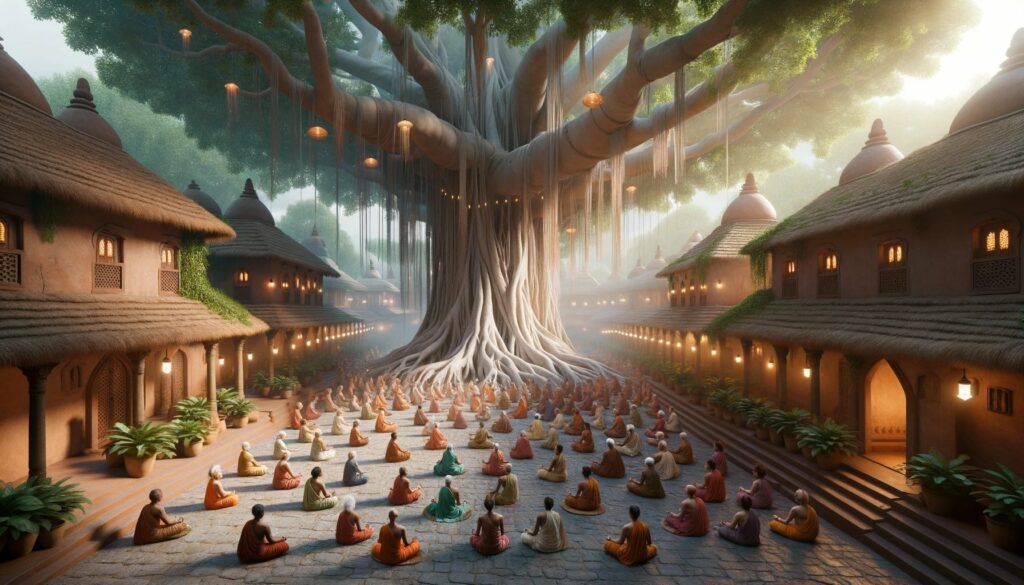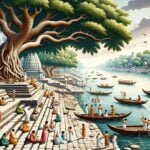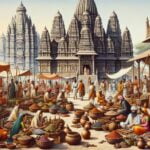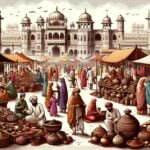Unraveling Ancient Indian Civilizations: Mysteries and Insights takes you on a captivating journey through the enigmatic world of ancient Indian civilizations. Delving into the intricacies of their culture, socio-political structures, religious beliefs, and technological advancements, this article unravels the mysteries that surround these remarkable societies. As a seasoned historian specializing in this fascinating subject, I have meticulously examined texts, artifacts, and archaeological evidence to offer you comprehensive insights into the rich historical backdrop of India. Join me as we transcend time and illuminate the past to uncover the secrets of these ancient Indian civilizations.
What Were Ancient Indian Civilizations?
The Ancient Indus Civilization: A Gateway to the Past
Imagine a bustling metropolis, teeming with advanced infrastructure, thriving trade, and a rich cultural tapestry. Welcome to the ancient Indian civilization, also known as the Indus or Harappan civilization. As a seasoned historian specializing in ancient civilizations, I’ve delved deep into India’s historical backdrop to unravel the mysteries of this fascinating era. Join me on a journey through time to explore the enigmatic world of ancient Indian civilizations.
The Birth of an Urban Culture
The ancient Indian civilization emerged as the earliest known urban culture in the Indian subcontinent, spanning from the 25th century BC to the 17th century BC. Two of its vibrant towns, Mohenjo-daro and Harappa, stand as testaments to the civilization’s remarkable development. But how did this civilization come into being?
Geographical Factors and Influence
Ancient Indian civilization owed its birth to the geographical factors of the region. The society evolved from villages that adopted the well-established Mesopotamian model of irrigated agriculture. The fertile lands along the Indus River valley provided an ideal setting for the civilization to thrive. Coupled with a strategic location for trade, the Indus civilization burgeoned into a remarkable urban society.
A Society Ahead of its Time
The Indus civilization holds the distinction of being one of the world’s three earliest civilizations, along with Mesopotamia and Egypt. Its cities, like Harappa and Mohenjo-daro, featured well-planned layouts, sophisticated drainage systems, and remarkable public baths. The urban dwellers practiced advanced forms of agriculture, metallurgy, and town planning, leaving us in awe of their unparalleled ingenuity.
The Rise and Decline
The rise of the Indus civilization in the 3rd millennium BCE marked a paradigm shift in Indian history. However, the decline of this ancient civilization remains shrouded in mystery. It was not a uniform downfall; instead, various factors contributed to its eventual decline. Environmental changes, including shifts in river courses and a decrease in rainfall, are believed to have played a part. Other theories propose invasion, natural disasters, or internal conflicts as potential causes.
The Treasures of Worship and Belief
Religion played a significant role in the lives of ancient Indian civilization. The people worshiped a multitude of gods and engaged in ritual worship. The emergence of early Hinduism laid the foundation for religious and cultural developments that would shape Indian society for centuries to come. The caste system, a social and religious phenomenon, also gained prominence during this era.
Unearthing the Past
As a historian, these ancient civilizations are like puzzle pieces waiting to be unearthed. By examining texts, artifacts, and archaeological evidence, we piece together the intricate details of their culture, socio-political structures, religious beliefs, and technological advancements. The past serves as a canvas, waiting for us to paint a picture of these enigmatic societies.
Join me on this captivating journey through time as we unravel the mysteries of ancient Indian civilizations. Together, we will transcend the confines of time to illuminate the rich tapestry of the past.
Ancient Indian Civilization was a rich tapestry of culture, philosophy, and innovation. As you delve into the mysteries of this vibrant civilization, prepare to be captivated by its profound impact on the world. Journey with us to explore the wonders of ancient India, from the magnificent Indus Valley Civilization to the profound teachings of the Upanishads. Uncover the secrets of their sophisticated city planning and marvel at the intricate craftsmanship of their temples. Let your curiosity guide you on this extraordinary adventure into the heart of ancient India. Click here to embark on this fascinating journey.
Culture and Societal Structures of Ancient Indian Civilizations
The ancient Indian civilizations have captivated historians and archeologists for centuries, offering a glimpse into a world shrouded in mystery and intrigue. These civilizations, with their rich cultural heritage and complex societal structures, provide valuable insights into the lives of our ancestors. In this article, we will unravel the enigma surrounding the culture and societal structures of ancient Indian civilizations.
The Social Structure: Varna and Ashrams
One of the defining features of ancient Indian society was its social structure, which was based on the concepts of Varna and Ashrams. The Indo-Aryans, who played a significant role in shaping these civilizations, were divided into three classes: the Brahmanas (priests), the Rajanyas (warriors), and the Vaisyas (commoners). Additionally, there were the Sudras, who occupied the lowest rung of the social ladder.
The Caste System: Hierarchy and Division
A key aspect of ancient Indian society was the caste system, which ranked individuals based on their occupation and economic potential. This system divided society into different castes, each with its own set of privileges and restrictions. At the lowest level were the Untouchables, who were considered impure and faced severe discrimination. This caste system permeated all aspects of life, with endogamous kinship groups arranged in a hierarchy of ritual rankings.
Religious and Cultural Developments
Ancient India witnessed significant religious and cultural developments that continue to shape the country’s identity today. The emergence of early Hinduism as a foundational religion, along with the coexistence of various other belief systems, contributed to the diverse religious landscape of ancient Indian civilizations. Intricate temples, elaborate rituals, and the practice of meditation were integral to the religious fabric of these societies.
Trade and Writing Systems
Trade played a vital role in the ancient Indian civilizations, facilitating cultural exchange and economic growth. The sophisticated writing systems developed during this time provided a means to record important events, religious texts, and scientific knowledge. However, more research is still needed to fully understand the extent and impact of trade and writing systems in ancient India.
Legacy and Influence
The ancient Indian civilizations left a lasting impact on world history, with their influence extending to modern India. From language and literature to philosophy and art, the cultural heritage of these civilizations continues to shape contemporary Indian society. Their technological advancements, particularly in the field of mathematics and astronomy, were crucial contributions to the world.
In conclusion, the study of ancient Indian civilizations offers a fascinating journey into the past, unravelling the mysteries surrounding their culture and societal structures. From the intricate social hierarchies determined by the caste system to the flourishing of art, religion, and trade, these civilizations have left an indelible mark on the world. As we strive to illuminate their past, we gain a deeper understanding of our own collective human history and the diverse tapestry of ancient Indian cultures.
Significance and Legacy of Ancient Indian Civilizations
Ancient Indian civilizations, with their rich historical backdrop, hold great significance and continue to leave a lasting legacy on the world. These enigmatic societies, shrouded in mysteries, offer valuable insights into the cultural, socio-political, religious, and technological developments of ancient India. Let’s delve deeper into the significance and legacy of these ancient Indian civilizations.
The Indus Valley Civilization:
One of the earliest known urban cultures in ancient India, the Indus Valley Civilization emerged around 2800 BCE and lasted until around 1700 BCE. This remarkable civilization showcases advanced urban planning, drainage systems, and standardized weights and measures. Archaeological evidence suggests that it was a highly organized society with thriving trade networks and a rich artistic tradition. The Indus Valley Civilization’s significance lies in its contributions to early urbanization and its influence on subsequent societies in the Indian subcontinent.
The Vedic Age and Cultural Transformation:
During the Vedic Age, Aryan tribes infiltrated northern India from Central Asia around 1500 BCE. This period, though lacking surviving written records, marks a significant cultural transformation. The Aryan society was largely organized around religious rituals and warrior clans. The Vedic Age laid the foundation for early Hinduism and witnessed the composition of the Vedas, sacred texts that shaped religious practices and philosophical beliefs.
Re-emergence of Cities and Organized States:
After the decline of the Indus Valley Civilization, cities began to re-emerge in ancient India, leading to the formation of organized states. These states, such as Magadha and Maurya, marked important landmarks in ancient Indian history. The rise of organized states brought about political structures, administrative systems, and societal hierarchies. The legacy of these developments can be seen in the later empires that emerged, such as the Gupta Empire, known for its advancements in science, art, and literature.
Religious and Cultural Developments:
Ancient India’s culture and religious developments left an indelible mark on history. The blending of Vedic traditions and indigenous beliefs gave rise to early Hinduism, which became a foundational religion. Additionally, Buddhism and Jainism emerged as significant religious and philosophical movements, emphasizing non-violence, compassion, and the pursuit of spiritual enlightenment. These religions shaped the moral and ethical fabric of ancient Indian society and continue to have widespread influence to this day.
Legacy in Art, Literature, Science, and Mathematics:
Ancient Indian civilizations made tremendous contributions to art, literature, science, and mathematics. The art of ancient India, ranging from cave paintings to intricate sculptures, showcased the cultural diversity and aesthetic sensibilities of the time. Literature, such as the epics Ramayana and Mahabharata, captured profound philosophical and ethical debates, along with tales of heroism and divine intervention.
In the field of science and mathematics, ancient Indian scholars excelled. Pioneering discoveries in astronomy, including the concept of zero and the decimal system, laid the foundations for modern mathematical advancements. The legacy of ancient Indian civilizations can also be seen in the Sanskrit language, which served as a source for numerous regional languages.
Conclusion:
The significance and legacy of ancient Indian civilizations are profound. From the advanced urban planning of the Indus Valley Civilization to the cultural and philosophical contributions of the Vedic Age, these civilizations offer a glimpse into India’s rich historical past. Their legacy thrives in modern Indian society, with language, literature, art, mathematics, and religious practices still influenced by the foundations laid during ancient times. The mysteries and insights unraveled from studying these civilizations continue to shape our understanding of the world and provide us with a deeper appreciation of the ancient Indian heritage.
FAQ
Question 1
What was the social structure of ancient Indian civilization?
Answer 1
The social structure of ancient Indian civilization was based on Varna and ashrams. The Indo-Aryans were divided into three classes: Brahman, Rajanya, and Vis. The society had four Varnas: Brahmins, Warriors, Commoners, and Sudras. There was also a caste system that ranked people based on their occupation and economic potential, with the lowest level being the Untouchables.
Question 2
What were the divisions within ancient Indian society based on?
Answer 2
Indian society was characterized by caste, with endogamous kinship groups arranged in a hierarchy of ritual ranking. The ancient Indian civilization had a four-fold classification of the entire people into varnas and a fourfold division of the life of each individual into ashrams.
Question 3
What were some significant religious and cultural developments in ancient India?
Answer 3
Ancient India had a rich and diverse religious and cultural heritage. It included the emergence of early Hinduism as a foundational religion. The civilization also saw the commingling of cultural elements from different regions.
Question 4
What was the impact of ancient Indian civilization on world history?
Answer 4
The civilization of ancient India had a significant impact on religious history. It also left a lasting impact on world history and continues to influence modern India today.
Question 5
What were the key aspects of the ancient Indus Valley civilization?
Answer 5
The Indus Valley civilization, the earliest known urban culture in the Indian subcontinent, emerged around 2800 BCE and disappeared around 1700 BCE. It had a complex social system, but its societal and political structure is still being studied. The decline of the Indus Valley civilization is attributed to climate change and migration.
- Discover Long Black Pepper: Flavor & Health Benefits - April 25, 2025
- Shocking Twists: The Grownup Review: Unreliable Narration - April 25, 2025
- A Quiet Place Book vs Movie: A Deep Dive - April 25, 2025
